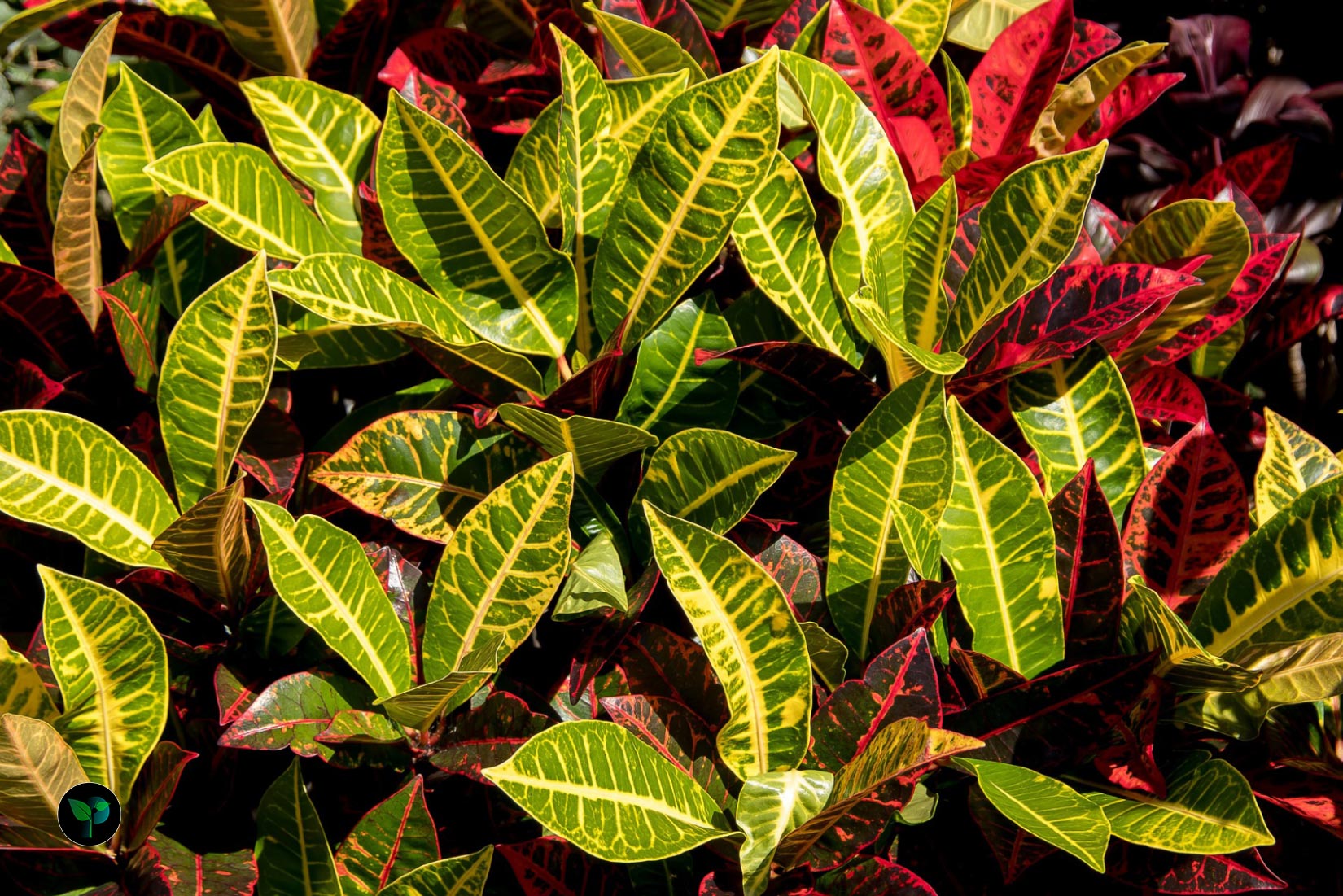In this botanical journey on PlantsFolder, we delve deep into the unique characteristics, essential maintenance tips, and ornamental uses of Croton plants, known for their colorful leaves in hues of red, orange, yellow, green, and purple. Discover the intricacies of caring for these tropical treasures, from providing the right light and water to nurturing their lush growth and vibrant foliage.
The Croton plant, scientifically known as Codiaeum variegatum, is a popular and colorful tropical plant prized for its vibrant foliage and ornamental appeal.

Characteristics
Colorful Foliage
Croton plants are renowned for their striking, variegated leaves that come in a dazzling array of colors including red, orange, yellow, green, and purple. The leaves may display various patterns such as speckles, stripes, and spots, adding to the plant’s ornamental appeal.
Leaf Shapes and Sizes
Their leaves can be elongated, broad, lobed, or oval-shaped, contributing to the diversity and visual interest of the plant. The foliage of these plants varies in size, with some varieties featuring larger leaves and others with more petite foliage.
Variegation
Variegation refers to the contrasting colors and patterns on the leaves of these plants, creating a bold and eye-catching display. The variegation can occur on the entire leaf surface or along the margins, enhancing the plant’s overall coloration.
Growth Habit
They typically have a bushy and compact growth habit, producing a dense canopy of colorful foliage. The plant may grow to different sizes depending on the variety and environmental conditions, ranging from compact houseplants to larger shrubs.
Indoor and Outdoor Use
Croton plants are versatile and can be grown both indoors as houseplants and outdoors in gardens or landscapes. In indoor settings, Crotons thrive in bright, indirect light and high humidity, whereas outdoor plants prefer sunny locations in tropical or subtropical climates.
Maintenance
They require regular watering to keep the soil consistently moist, but not waterlogged, to prevent root rot. Pruning is recommended to maintain the plant’s shape, promote bushier growth, and remove any leggy or damaged branches. Providing adequate humidity through misting or a pebble tray can help keep Croton plants healthy and vibrant.
Toxicity Warning
It’s important to note that these plants are considered toxic if ingested by pets or humans. Keep them out of reach of children and animals.
Care and Maintenance Tips
Light
Croton plants thrive in bright, indirect light. Place them near a window with filtered sunlight to prevent leaf burn. Insufficient light can cause Croton foliage to lose its color vibrancy, so ensure it receives adequate light exposure.
Watering
Water Croton plants when the top inch of the soil feels dry to the touch. Avoid overwatering, as soggy roots can lead to root rot. Use room temperature water to avoid shocking the plant and water thoroughly, allowing excess water to drain from the pot.
Humidity
Croton plants prefer high humidity levels. Increase humidity by misting the leaves regularly or placing a humidifier near the plant. In dry indoor environments, consider using a pebble tray filled with water to create a humid microclimate around the plant.
Temperature
Crotons thrive in warm temperatures between 60-80°F (15-27°C). Protect them from drafts, cold air, and sudden temperature drops. Avoid placing Crotons near heaters, air conditioners, or cold windows that could stress the plant.
Pruning
Trim leggy or overgrown stems to maintain the plant’s shape and encourage bushier growth. Remove dead or yellowing leaves to promote new growth and maintain the plant’s appearance.
Fertilizing
Feed Croton plants with a balanced liquid fertilizer diluted to half-strength every 4-6 weeks during the growing season (spring to fall). Avoid over-fertilizing, as this can lead to fertilizer burn and damage the plant.
Pests and Diseases
Keep an eye out for common pests such as spider mites, mealybugs, and scale insects. Treat infestations promptly with insecticidal soap. Prevent issues like root rot by ensuring proper drainage and avoiding waterlogged soil.
Repotting
Report Croton plants when they outgrow their container or the soil becomes compacted. Use a well-draining potting mix and a slightly larger pot. Repot in the spring, and refresh the soil to provide fresh nutrients for the plant.
Ornamental Uses
Colorful Foliage
They are valued for their striking, variegated leaves that come in a range of vivid colors such as red, orange, yellow, green, and purple. The vibrant foliage adds a pop of color and visual interest to any setting, making Croton standout ornamental plants.
Visual Appeal
Croton plants serve as eye-catching focal points in both indoor and outdoor settings, providing a bold and dynamic display of colors and patterns. The foliage of Crotons creates a lush and tropical ambiance, enhancing the aesthetic appeal of gardens, patios, and interior spaces.
Landscaping
In outdoor landscapes, Croton plants are utilized as accent plants, borders, or mass plantings to create vibrant and visually striking arrangements. They add texture, color diversity, and year-round interest to garden beds, borders, and mixed plantings.
Container Planting
Croton plants are well-suited for container gardening, allowing them to be easily moved and displayed on patios, decks, balconies, or indoor spaces. Placing Crotons in decorative containers enhances their ornamental appeal and versatility in various settings.
Indoor Decor With Croton
They are popular as houseplants, bringing a touch of tropical elegance and color to interior decor. They brighten up living spaces, offices, and commercial settings, adding warmth and vibrancy to the environment.
Seasonal Displays
Croton plants are often featured in seasonal displays and holiday decorations, providing a festive touch with their colorful foliage. They are used in arrangements, wreaths, and centerpieces to celebrate special occasions and add a cheerful atmosphere.
Contrast and Texture
The variegated leaves of Croton plants create dramatic contrasts and textures, allowing for creative garden designs and unique combinations with other plants. Crotons can be used to create visual interest, depth, and dimension in landscaping and floral arrangements



Leave a Reply